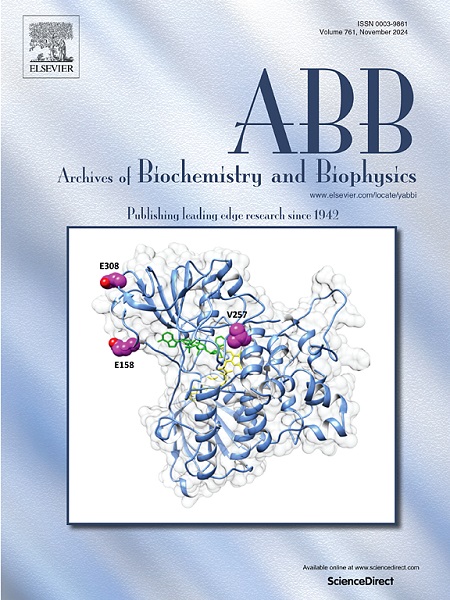Coenzyme Q10 alleviates oxidative stress, inflammation and fibrosis via activation of TGFβ1/TNF-α in FCA-Salt hypertensive rats
IF 3.8
3区 生物学
Q2 BIOCHEMISTRY & MOLECULAR BIOLOGY
引用次数: 0
Abstract
Hypertension is one of the most common factors contributing to cardiac remodeling that links to changes in both heart and kidney functions. Several studies have reported the beneficial effects of Coenzyme Q10 (CoQ10) in reducing oxidative stress due to its antioxidant properties. However, the cardioprotective and nephroprotective roles of CoQ10 against the toxicity induced by fludrocortisone acetate (FCA) have yet to be investigated. Therefore, we evaluated the CoQ10 effects on FCA-induced cardiotoxicity and nephrotoxicity in a rat model (FCA-Salt). We analyzed various oxidative stress parameters and antioxidant enzyme activities using biochemical assays. In addition, we examined inflammatory and fibrosis via histological staining of heart and kidney tissues. CoQ10 significantly reduced lipid peroxidation product-malondialdehyde (MDA) while increased nitric oxide (NO) in the FCA-Salt rats. Antioxidant enzyme activities were also enhanced by CoQ10 in these rats. Histopathological examination detected tissue damage and fibrosis in the FCA-Salt group, which was significantly reduced by CoQ10. Furthermore, enzyme-linked immunosorbent assay (ELISA) indicated the activation of Transforming growth factor-β1/Tumor necrosis factor-α (TGF-β1/TNF-α) by CoQ10. Consequently, our study suggests that CoQ10 can effectively protect heart and kidney health against cardiotoxicity and nephrotoxicity in FCA-Salt hypertensive rats via TGF-β1/TNF-α pathway.

辅酶Q10通过激活fca -盐高血压大鼠tgf - β1/TNF-α减轻氧化应激、炎症和纤维化
高血压是导致心脏重塑的最常见因素之一,心脏重塑与心脏和肾脏功能的变化有关。一些研究报道了辅酶Q10 (CoQ10)由于其抗氧化特性在减少氧化应激方面的有益作用。然而,辅酶q10对醋酸氢化可的松(FCA)毒性的心脏保护和肾保护作用尚未得到研究。因此,我们在大鼠模型(FCA-Salt)中评估了CoQ10对fca诱导的心脏毒性和肾毒性的影响。我们用生化方法分析了各种氧化应激参数和抗氧化酶活性。此外,我们通过心脏和肾脏组织的组织学染色检查炎症和纤维化。CoQ10显著降低FCA-Salt大鼠的脂质过氧化产物丙二醛(MDA),同时增加一氧化氮(NO)。辅酶q10也增强了这些大鼠的抗氧化酶活性。组织病理学检查发现FCA-Salt组组织损伤和纤维化,CoQ10显著降低。此外,酶联免疫吸附试验(ELISA)显示辅酶q10激活转化生长因子-β1/肿瘤坏死因子-α (TGF-β1/TNF-α)。因此,我们的研究表明,CoQ10可以通过TGF-β1/TNF-α途径有效保护fca -盐高血压大鼠的心脏和肾脏健康,免受心脏毒性和肾毒性的影响。
本文章由计算机程序翻译,如有差异,请以英文原文为准。
求助全文
约1分钟内获得全文
求助全文
来源期刊

Archives of biochemistry and biophysics
生物-生化与分子生物学
CiteScore
7.40
自引率
0.00%
发文量
245
审稿时长
26 days
期刊介绍:
Archives of Biochemistry and Biophysics publishes quality original articles and reviews in the developing areas of biochemistry and biophysics.
Research Areas Include:
• Enzyme and protein structure, function, regulation. Folding, turnover, and post-translational processing
• Biological oxidations, free radical reactions, redox signaling, oxygenases, P450 reactions
• Signal transduction, receptors, membrane transport, intracellular signals. Cellular and integrated metabolism.
 求助内容:
求助内容: 应助结果提醒方式:
应助结果提醒方式:


